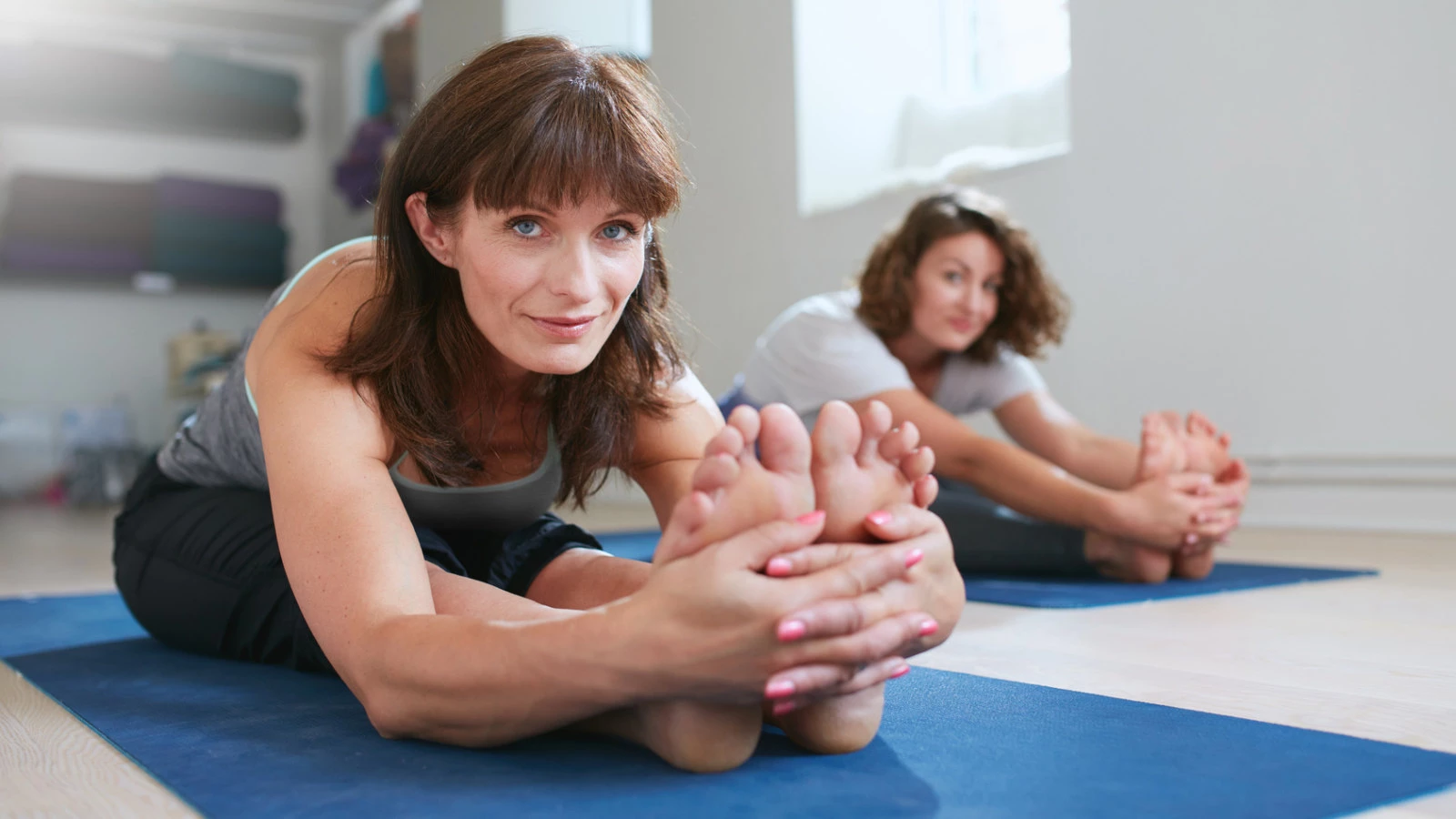How to Prepare for a Healthy Perimenopause with Yoga

Most women think that the changes of menopause begin in the late 40s or early 50s. But in fact, the early changes preceding menopause start as early as 10-15 years before the onset of menopause. This period of life is referred to as perimenopause. And, your health habits- including yoga!- during this period can often determine how smooth – or difficult – the transition into menopause will be.
What Is Perimenopause?
Somewhere in your 40s, or possibly even as early as your mid 30s, you’ll notice that your menstrual cycles start to change length. They can become longer or shorter, and you may skip a month of ovulation. You might experience some sleep–pattern disruption, vaginal dryness or find your interest in sex decreases. The temperature of the room you are in starts to matter more. Oftentimes mood instability accompanies these changes—feelings of fatigue, being overwhelmed, or even out-of-control are not uncommon.
What’s happening—is this menopause? Technically, it’s perimenopause. While the hormonal changes of the body are decades in the making, the symptoms of perimenopause tend to become obvious in the three-to-four year period during which the body prepares itself for the transition into menopause, when periods and ovulation will cease.
Common Symptoms of Perimenopause
Perimenopause is natural and inevitable— unfortunately it’s also notoriously uncomfortable. And, as if the bodily changes that take place during perimenopause weren’t uncomfortable enough, they can also increase the risk of a number of more serious concerns: depression or other psychological disorders, severe headaches, bone loss, cardiovascular disease, and metabolic syndrome.
-
Hot flashes- For many women, hot flashes begin before the onset of menopause. And the earlier your hot flashes start, unfortunately research shows, the longer they will tend to last. About 75 to 80% of women experience hot flashes, which can last from a few seconds to 10 minutes and be as mild as a flushed face or so intense as to cause perspiration and heart palpitations.
-
Mood swings- Mood swings are one of the earliest signs of perimenopause, according to experts, and they can begin even before your cycle shortens. Four out of ten women have mood swings associated with perimenopause—from feelings of rage to moodiness, anxiety, or feelings of loneliness and sadness. According to some studies, the risk of depression doubles when women enter perimenopause; women who have had PMS or postpartum depression may be even more prone.
-
Irregular periods and low libido- As ovulation becomes more irregular, your cycle changes, and your flow may go from light to super heavy. Sexual desire may change as well and intercourse can become painful, because your vaginal area loses lubrication and elasticity.
-
Cognitive problems- One study found that 60% of perimenopausal women experience short-term memory loss, do not learn as well, and have a hard time concentrating. The effect is temporary, though—cognitive function improved back to previous levels during postmenopause, say researchers.
What You Can Do to Minimize Symptoms of Perimenopause
So what can you do to protect your body and psychology from the toll perimenopause can take? Doctors agree that some of the best ways to manage the symptoms of perimenopause and prepare for a smoother menopausal transition are health–supporting behaviors.
For these to have effect, however, it’s important to start early. Once your dealing with full-fledged perimenopausal symptoms, it will take longer to restore the balance of your body.
Here are some key pointers to help your body stay balanced and prepare for the changes of menopause:
-
Make sure you are getting the nutrients you need. This includes amino acids, the right proportions of fatty acids, vitamins (especially D), minerals, and antioxidant nutrients. A balanced diet is a big part of this, but vitamin and mineral supplements may be needed as well.
-
Make certain you aren’t picking up toxic elements, such as mercury and lead, from your diet or environment. These can negatively affect hormonal function. (See more information on testing below)
-
Check your thyroid health. Thyroid function is tightly tied to sexual–hormone function.
-
Keep an eye on bone loss. An ounce of prevention is worth a pound of cure, the old saying goes, and preventing bone loss now will help protect your body in the years to come.
Using Yoga to Prepare for a Healthy Perimenopause
Detecting perimenopause early and taking preventative steps will not only help facilitate a smoother transition, but lay the groundwork for better health, balance, and energy in the years following menopause.
Yoga is not only a way to maintain physical fitness and function, the practice helps us manage stress, which is a major contributor to hormone imbalance. Yoga poses can help to reduce many common menopausal symptoms such as hot flashes, mood swings, and sleep disturbances.
Favor calming and cooling yoga poses, such as a simple Forward Bend (Uttansasana) or Downward Facing Dog (Adho Mukha Svasana). These are gentle inversions, which increase blood flow to the head and heart. In addition, include yoga poses that strengthen the lower abdominal area, such as Locust Pose (Salabhasana), Bow Pose (Dhanurasana), and Boat Pose (Navasana). These yoga poses bring energy and increase circulation to the ovaries and uterus and strengthen the entire pelvic area.
There is much to learn about how best to target a yoga practice for a healthy perimenopause and menopause.



